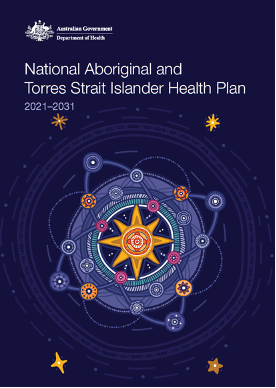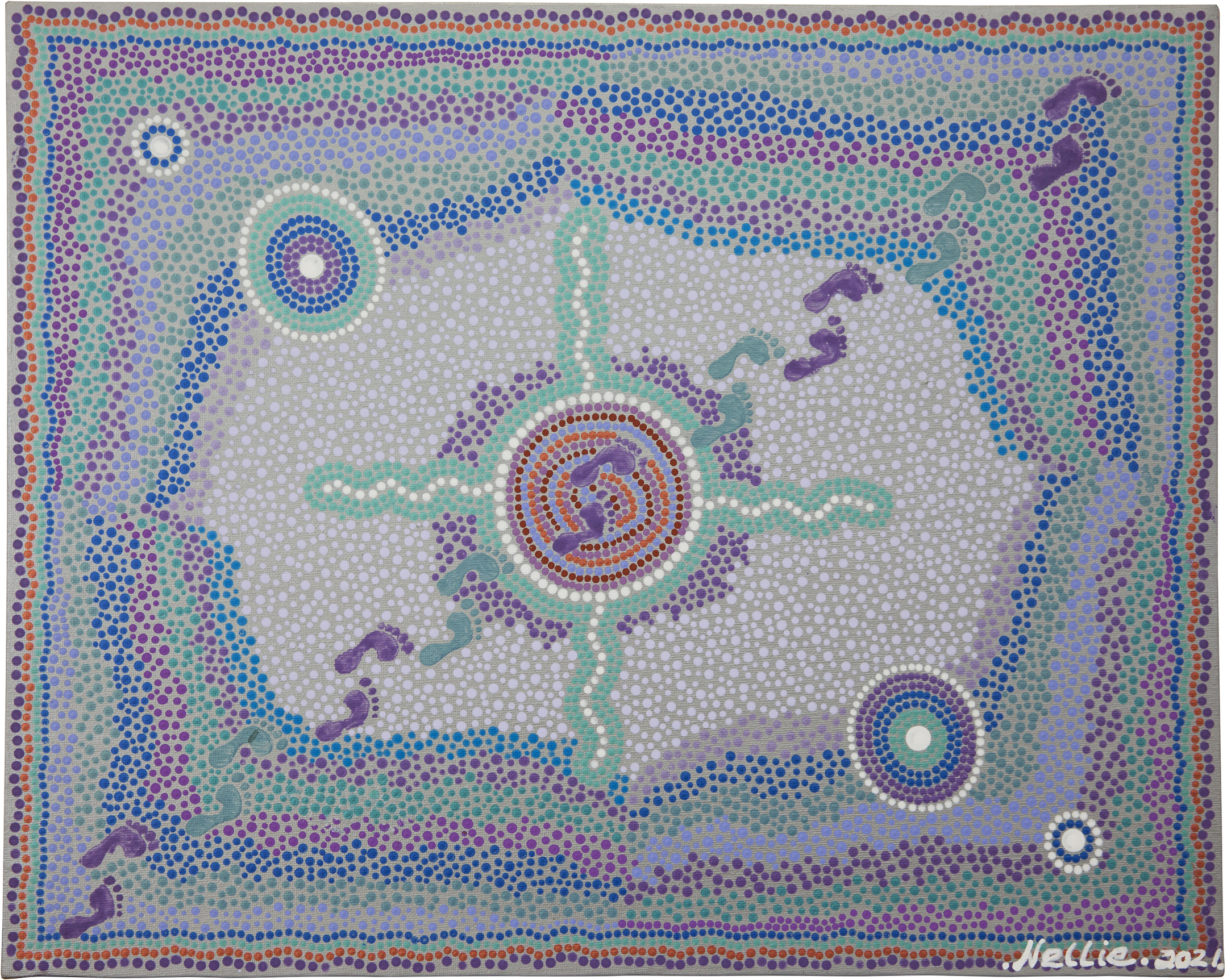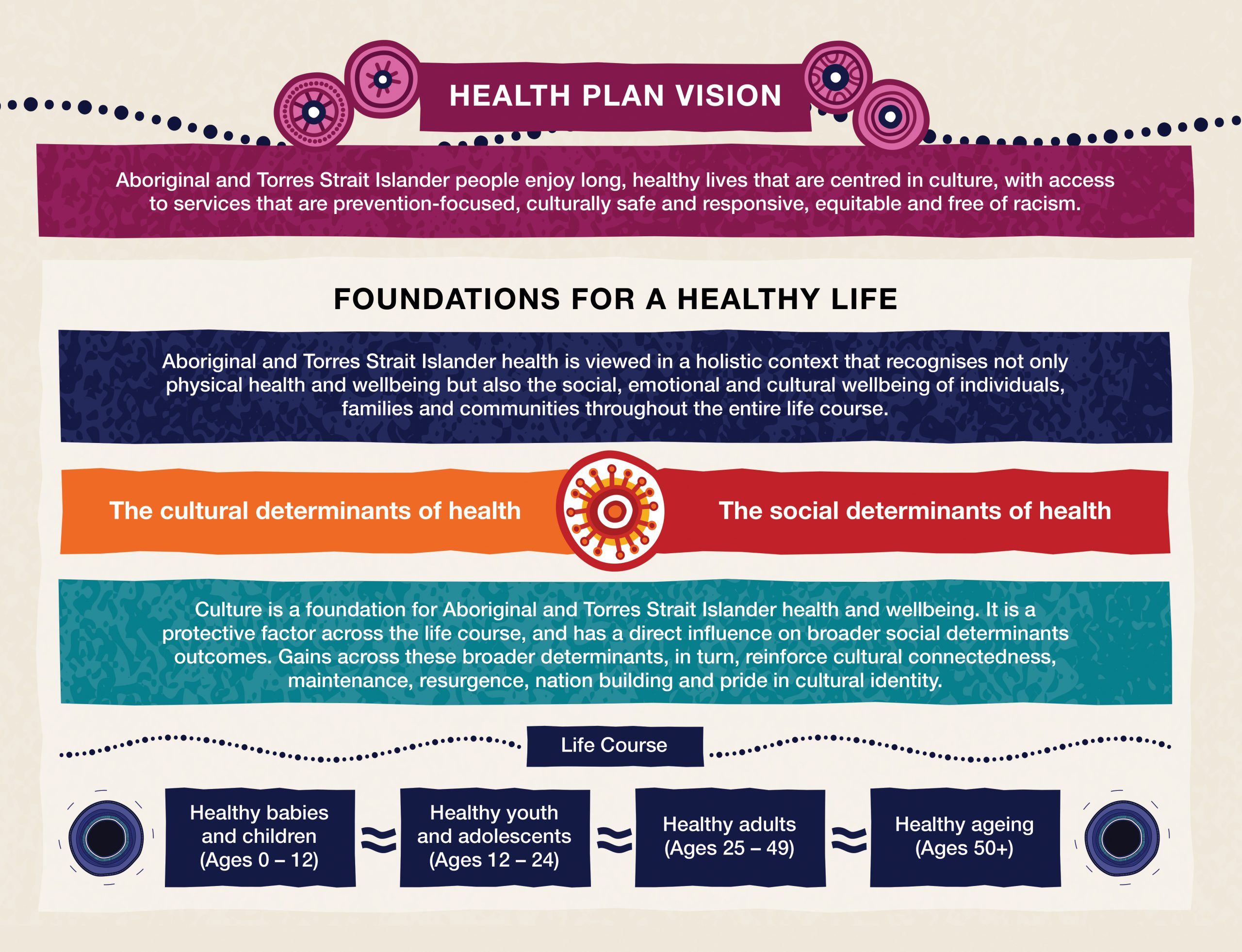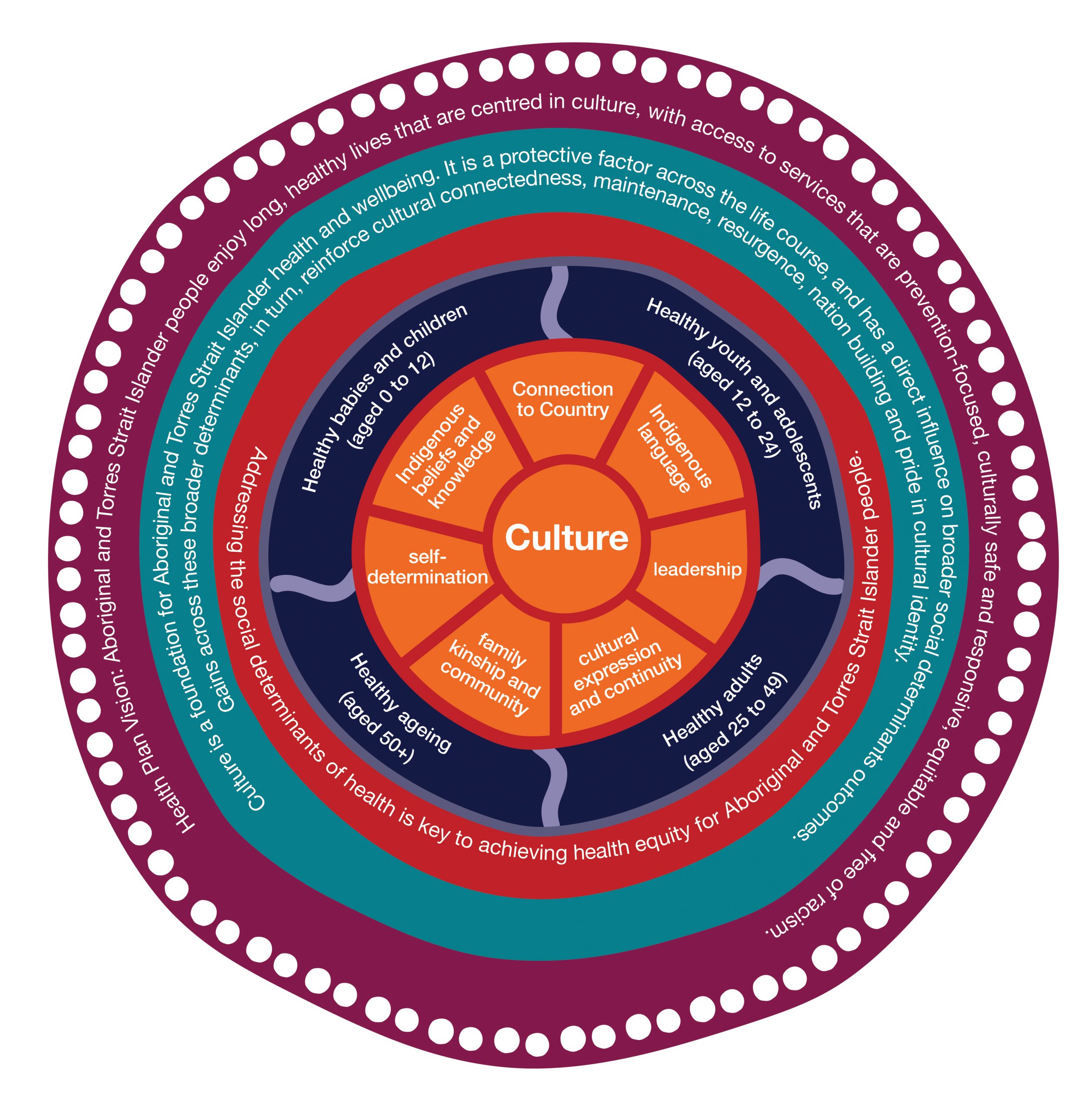Art by Nellie Green 2021.
James Gerrard explains why the latest health plan matters to all podiatrists, no matter what the role or context.

Background to the plan
Aboriginal and Torres Strait Islander Peoples and Communities worked with the Australian Government Department of Health to co-design this 10-year health plan. The vision behind the plan is for ‘Aboriginal and Torres Strait Islander people [to] enjoy long, healthy lives centred in culture, with access to services that are prevention-focused, culturally safe and responsive, equitable and free of racism’. You can read more about this on page 17 of the plan here.
How does this health plan impact podiatrists?
For starters, it was released relatively recently, on 15 December, 2021, and we all need to be up-to-date regarding national health plans.
More than this, the plan supports us as podiatrists who may be working in Aboriginal and Torres Strait Islander Community Controlled Health Services and it also provides a framework for podiatrists in the mainstream health sector who are working to improve our provision of culturally safe and responsive care. The plan represents many individuals working together towards the goal of equitable health care delivery.
| Table 1. Accountability of the mainstream health system (adapted from The new National Aboriginal and Torres Strait Islander Health Plan 2021–2031) | |
| Mechanisms necessary for mainstream health services to provide culturally safe and responsive care [1] | Measuring and responding to experiences of racism [1] |
| Working in partnership with Aboriginal and Torres Strait Islander organisations to set and meet cultural safety training and accreditation standards [1] | |
| Working in partnership with Aboriginal and Torres Strait Islander organisations to develop and deliver person-centred care that is culturally safe, responsive, trauma-aware, and healing-informed [1] | |
| Increasing Aboriginal and Torres Strait Islander representation at all levels of health workforce, leadership and governance [1] | |
Ultimately, the plan states that it provides guidance for: ‘action to improve health and wellbeing outcomes for Aboriginal and Torres Strait Islander people’. Central to this plan are First Nations health perspectives, which are inclusive of ‘culture as a protective influence on physical, social and emotional wellbeing’. The plan is a resource for continual learning and improvement in First Nations health care provision with co-design by the experts in First Nations health, Aboriginal and Torres Strait Islander Peoples themselves.





